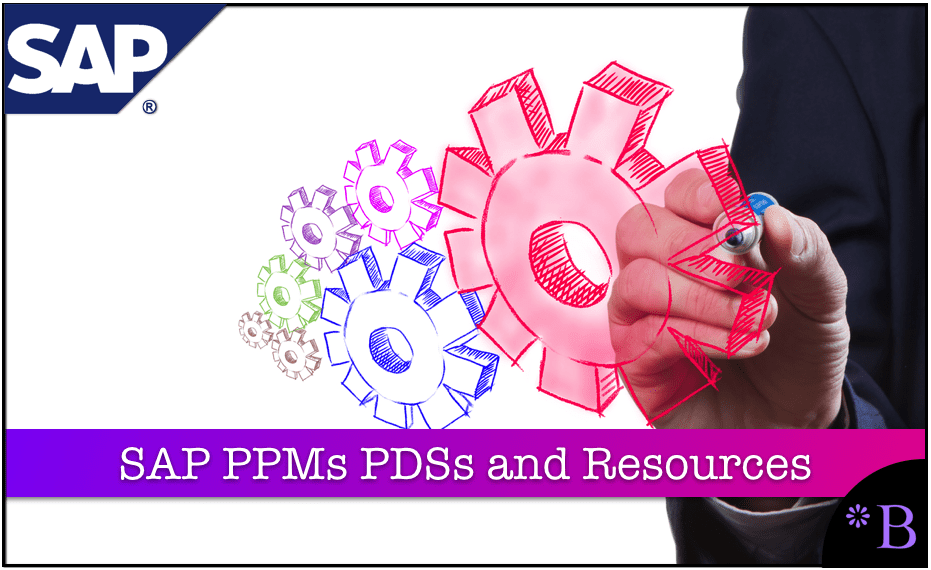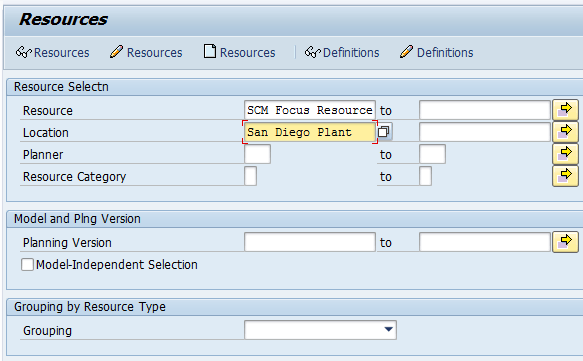How to Understand SAP APO Resources and Resource Types
Executive Summary
- SAP APO has various resource types, but only a limited number are commonly used, and the resource types differ from one another in important ways and differ per APO module.

Introduction
Resources are the mechanism for constraining the plan in SAP APO and determining if a plan is feasible. In this article, we will cover the resources types.
Our References for This Article
If you want to see our references for this article and other related Brightwork articles, see this link.
Notice of Lack of Financial Bias: We have no financial ties to SAP or any other entity mentioned in this article.
What Are SAP APO Resource Types?
Resources apply to SNP, PP/DS, and TP/VS.
However, a resource type is the resource category, and because different resources do different things, there are different resource types in SAP APO. The most common resources used in SAP APO are production resources, and this is in both SNP and PP/DS. Therefore SNP creates the “initial production plan,” in addition to creating the initial or network supply plan. Then PP/DS, when deployed, follows the supply plan and produces are more detailed production plan. SNP can plan down to the daily bucket; however, the supply planning system lacks visibility within the day.
When planning occurs for production within the day, this is called scheduling and is only performed by the DS portion of PP/DS. An interesting article on a real requirement at a client that describes the interaction between SNP and PP/DS on the same production resources can be found in this article.
A Listing of SAP APO Resource Types?
The different resources that can be used in APO are clear from the tabs in the resource view, which can be found in the following way:


This brings us to the resource view, where a tab represents each resource type.


Resource Types
Some of the items listed below are used by multiple modules, but some, such as vehicle resources, are specific to only one model. The resource types below ship with SAP standard with APO.
Each type is an alternative to the characteristic SAP APO Resource Type.
- Multi activity: Multiple activities can be processed at one time. (for precise scheduling – can be scheduled to the second – used by PP/DS)
- Single activity: The simplest type of resource where only one activity can be processed at a time. (for precise scheduling – can be scheduled to the second – used by PP/DS, also used by CTM)
- Multi –
- Multi-mixed: can be used by any module in APO.
- Bucket: Capacities are defined by quantities or daily rates. (these are often used by SNP, often used by CTM)
- Line: Used for production planning
- Line mixed: Same as a line resource, but also used by SNP.
- Transportation: Used by SNP to model transportation lead times and costs, allowing it to perform supply network planning.
- Vehicle: (as opposed to Transportation resources that are specific to SNP). Vehicle resources are multidimensional.
- Handling resource: (can be a single or multi-resource) – examples include loading and unloading equipment
- Calendar: These are expressed in time and not quantities.
How Resources Vary by Module
The resources below ship with SCM. Each type is an alternative of the characteristic APO Resource Type. SNP Resources
- Bucket resources
- Single-mixed Resources
- Multi-mixed Resources
- Transportation Resources
CTM Resources
- Multi activity resources
- Single activity resources
PPDS Resources
- Multi activity resources
- Single activity resources
- Line resources
- Line mixed resources
TPVS Resources
- Vehicle resources
- Handling resource
- Calendar
EWM Resources
Used to represent users or equipment in the warehouse. They are assigned to warehouses in EWM.
What is interesting is that TPVS and EWM do not use PPMs to organize their resources. DP uses PPMs but does not use resources. See more about PPMs on our PPM post.
For details on what these different resources mean and what they do, see this article.
For more details on resources, see this article.
Conclusion
Each of these resource types has a different set of options regarding how their capacity is set up and how their constraints are configured. Each resource applies to a different physical situation. As you can see, different resources apply to different modules, and some resources are used by multiple modules.
To read more about this, see this article.
The easiest way for a person coming from SAP ERP to understand SAP APO resources is by understanding a work center in PP.
To read more about this, see this blog article.